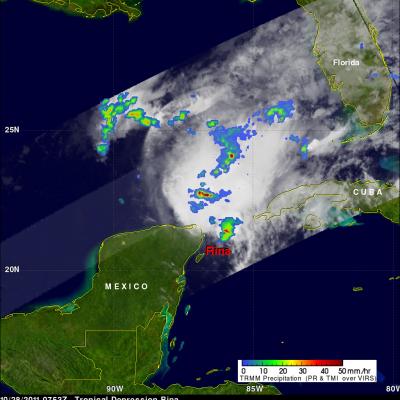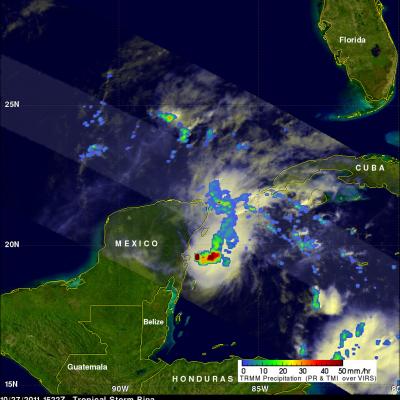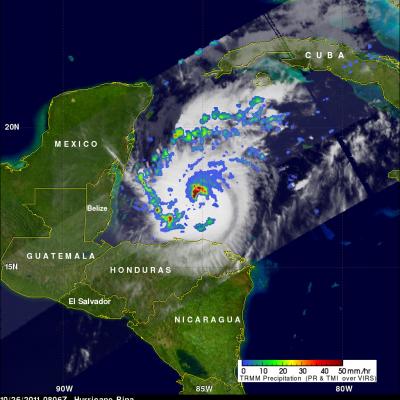Storminess Increases North Of Dissipating Rina
The TRMM satellite passed over rapidly dissipating tropical storm Rina twice on 28 October 2011. The images shown above were made using TRMM's Microwave Imager (TMI) and Precipitation Radar (PR) data collected by the first orbit before daylight at 0753 UTC (3:53 AM EDT). Tropical storm Rita was still dropping heavy rainfall in a small area off the northeastern tip of the Yucatan Peninsula but an even larger area of convective rainfall had formed to the north-northwest of Rina. The image on the upper right , looking toward the east, was made from TRMM's Precipitation Radar (PR) data. It reveals





